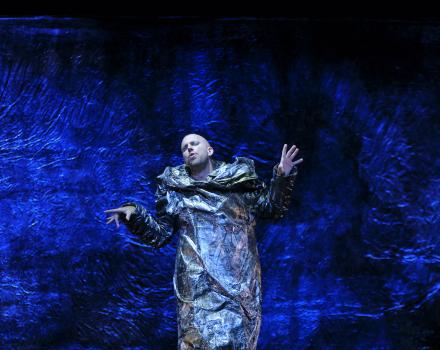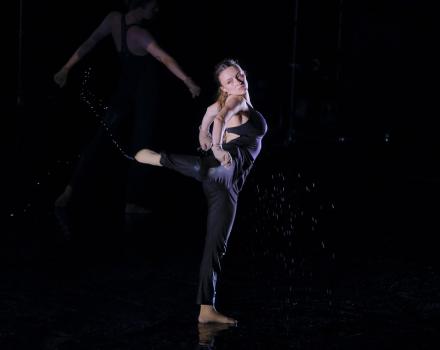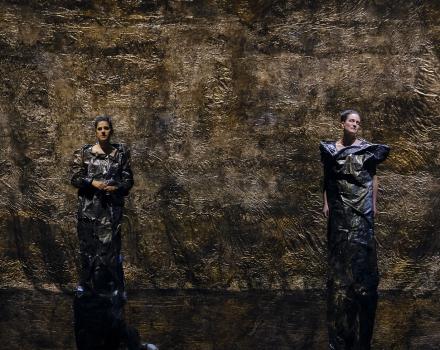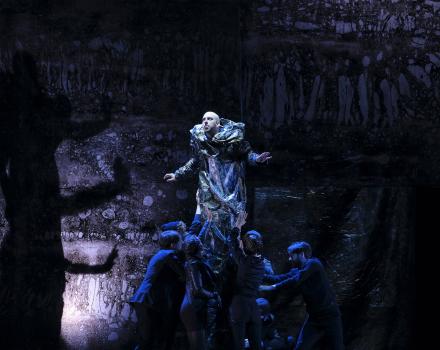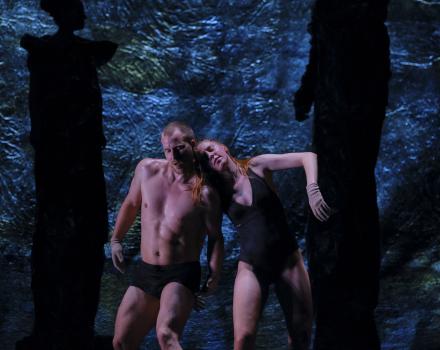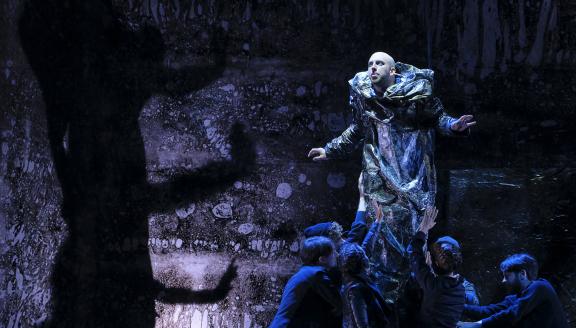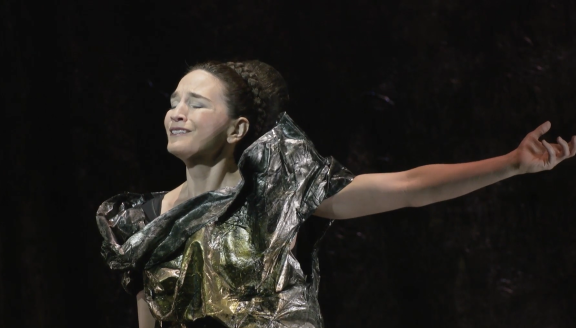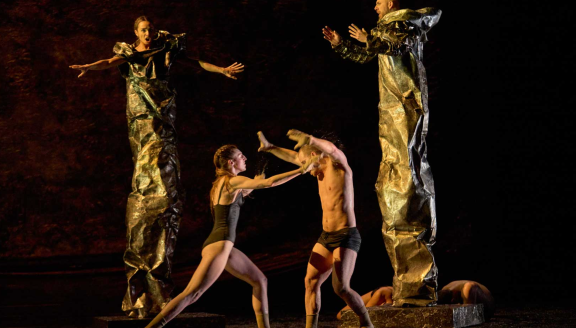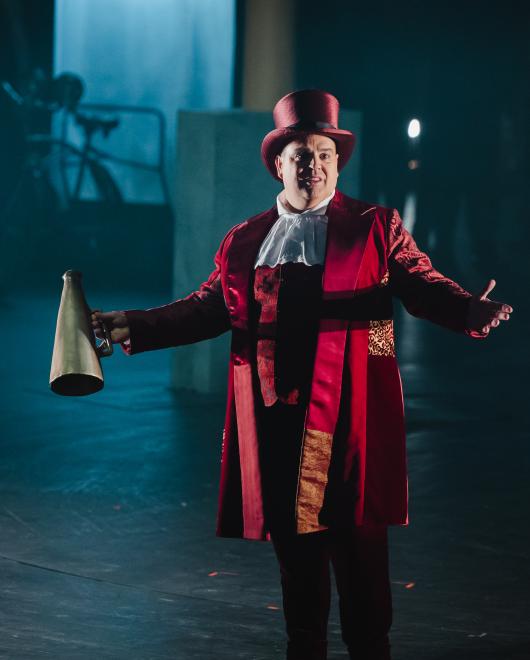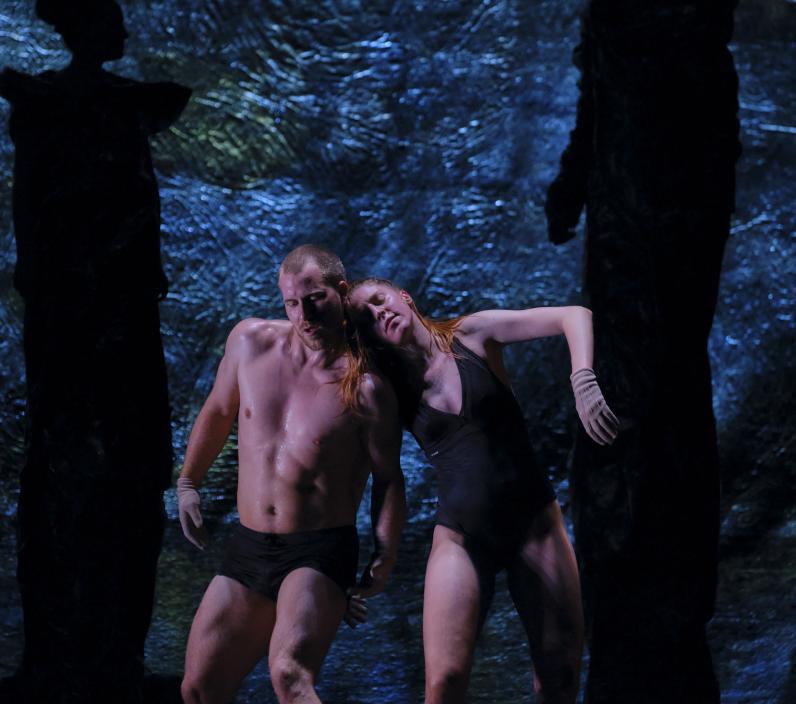
Dido, founder and queen of Carthage, falls in love with the Trojan hero Aeneas and they conduct a passionate affair. Tricked into leaving Dido by an evil Sorceress, Aeneas prepares his fleet in secret for departure. Dido cannot live without Aeneas and sings her great lament (‘When I am laid in earth’) and her passing is mourned by a chorus of cupids.
It is highly unusual for a baroque opera to end tragically and, 300 years after its premiere, Henry Purcell’s Dido and Aeneas still has the power to move, with its message about love and loss. Purcell’s exquisite music offers contrasting moods, ranging from Dido’s heartbreaking lament, via the darker tones of the witches, to the lively songs and dances of the sailors. The Liceu’s striking opera and dance production is directed by Blanca Li, who uses choreography to echo the main characters’ struggles to keep their passions in check. William Christie, pioneer of period instruments and renowned specialist in baroque repertoire, conducts his ensemble Les Arts Florissants promising a sensitive and unconventional production from Barcelona.
CAST
Dido | Kate Lindsey |
|---|---|
Aeneas | Renato Dolcini |
Sorceress | Renato Dolcini |
Belinda | Ana Vieira Leite |
First Witch | Maud Gnidzaz |
Second Witch, Second Woman | Virginie Thomas |
Sailor | Jacob Lawrence |
Spirit | Michael Loughlin Smith |
Dancers | Blanca Li Company |
Chorus | Padraic Rowan Christophe Gautier Bastien Rimondi Daniel Brant |
Orchestra | Les Arts Florissants |
| ... | |
Music | Henry Purcell |
|---|---|
Text | Nahum Tate based on Book VI of Virgil's ‘Aeneid’ |
Conductor | William Christie |
Director and Choreographer | Blanca Li |
Sets | Evi Keller |
Dramaturgy | Pierre Attrait |
Costumes | Laurent Mercier |
Costume-sculptures of the soloists | Evi Keller |
Lighting | Pascal Laajili |
| ... | |
VIDEOS
Story
Act 1
The palace of Queen Dido in Carthage. In response to her affliction, Dido’s confidant and sister Belinda convinces her to host Aeneas and his companions, who have arrived in the African city from Troy, after sea winds diverted their ships there. The Trojan hero accepts the warm welcome given to him by Dido and arranges a hunt for the queen’s benefit. Aeneas immediately falls in love with Dido.
Act 2
A sorceress gathers her witch companions to ruin Dido and Aeneas’s love. One of the witches appears before Aeneas dressed as Mercury and tells him that he must continue his journey to Italy on the order of the gods. From within their caves, the witches hear the fanfares announcing Dido and Aeneas passing through the forest. The witch-es cause a storm to thwart the young couple’s plans. Aeneas and Dido have returned to the city, driven there by the storm. Mercury then appears before Aeneas and, since he does not realise that the god is actually a witch, he prepares to obey the supposed god’s orders, despite regretting having to leave Queen Dido.
Act 3
The first scene shows us Aeneas’s departure. The sailors ask to leave Carthage and never return. The witches secretly spy on their prepa-rations, glad that their plans have succeeded.
In Dido’s palace, Aeneas tells the queen his plans and expresses his grief to her. She stands, heartbroken, beside Belinda. Dido feels betrayed and when Aeneas tries to back down, the queen’s pride gets the better of her and she orders Aeneas to leave. Once she is alone, Dido weeps next to Belinda. Before dying of grief, the Queen of Carthage asks those present not to forget her. The chorus sings a lament for the death of Dido and calls upon Cupid always to watch over her tomb.
Insights
Dido and Aeneas is remarkable for its quickly transforming action, widely contrasting moods (including the comic relief of the sailors' scene) and deeply tragic ending. Each scene is built up of units of recitative (or declamatory song), arioso, aria, chorus and dance. Purcell was following the formal model offered by Lully's tragédies en musique, but his chief innovation, inspired by contemporary Venetian opera, was to concentrate the greatest musical interest in the arias. Dido's are placed at the beginning and end of the opera: 'Ah! Belinda!' in Act I has a da capo structure, while the famous lament is built over a repeated chromatically descending five-bar bass, also common in Italian opera of the time. Listen out for the following features:
Act 1
- The overture in C minor is written in the French style, with two sections: slow and fast. ‘Fear no danger’ is a delightful passage, a duet between Belinda and a servant in ¾ time that has something of a folk air.
Act 2
- The witches’ scene is richly evocative with the choral fragments particularly noteworthy, like the concluding ‘In our deep vaulted cell’ complete with the cave’s echo written into the music. The scene ends with a dance that also uses an echo as a theatrical device.
- In a grove, where Dido and Aeneas have consummated their love the night before, the couple are entertained by Belinda and an attendant. The scene begins with an elegant ritornello that gives way to ‘Thanks to these lonesome vales’.
Act 3
- After a short prelude, a sailor, with the chorus, sings a tune with a folk air, ‘Come away, fellow sailors’. The triumphant and energetic chorus ‘Destruction’s our delight’ is followed by a concluding dance by the witches.
- ‘Thy hand Belinda’ is the recitative that precedes the aria ‘When I am laid in earth’, one of the saddest melodies in baroque opera. Drawing on the laments from early operas, Purcell’s aria in G minor is touching expression (especially with the words ‘Remember me!’) with minimal instrumental resources. It begins with the cello that gives way to the voice of the soprano, Dido. A chorus of cupids lament her passing ‘With drooping wings’ and the orchestra plays a slow and markedly funereal dance.
Gallery
